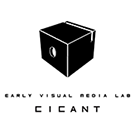Performing the photographic archive in contemporary Portuguese stage [EN]
Cosimo Chiarelli
Over the past decade, photography, and more generally the photographic archive, has become an object of interest for several artists of the Portuguese theatre scene, integrating their performative practice in various ways.
Artists such as Joana Craveiro (Um museu vivo de memórias pequenas e esquecidas, 2015), Jorge Andrade (Moçambique, 2016), Ana Janeiro (The Archive is Present, 2018), Tânia Dinis (Imaginário familiar, 2014/2017), André Amálio (Hotel Europa, 2018) often conceive the dramaturgy of their productions starting from archive images, be they personal, vernacular, or official. At the intersection of documentary theater, family album, and exhibition/performance installation, these productions resort to the presence on the scene of optical devices (sometimes pre-digital) and use the photographic object in its materiality in order to re-enact or manipulate the intimate and familiar remembrance or collective memory to reflect on specific moments of political or colonial history of the recent Portuguese past.
In my communication I intend to present some of these cases, questioning the function of these images and their performative status. How do these images act? What relationship do they establish with memory or post- memory? What is the boundary between their evocative power and their fictional dimension?
Organization


Partners





Campo Grande, 376, 1749 - 024 Lisboa | Tel.: 217 515 500 | Fax: 21 757 7006
Copyright © 2021 COFAC. Todos os direitos reservados. Gestão de conteúdos por Producao Multimédia
